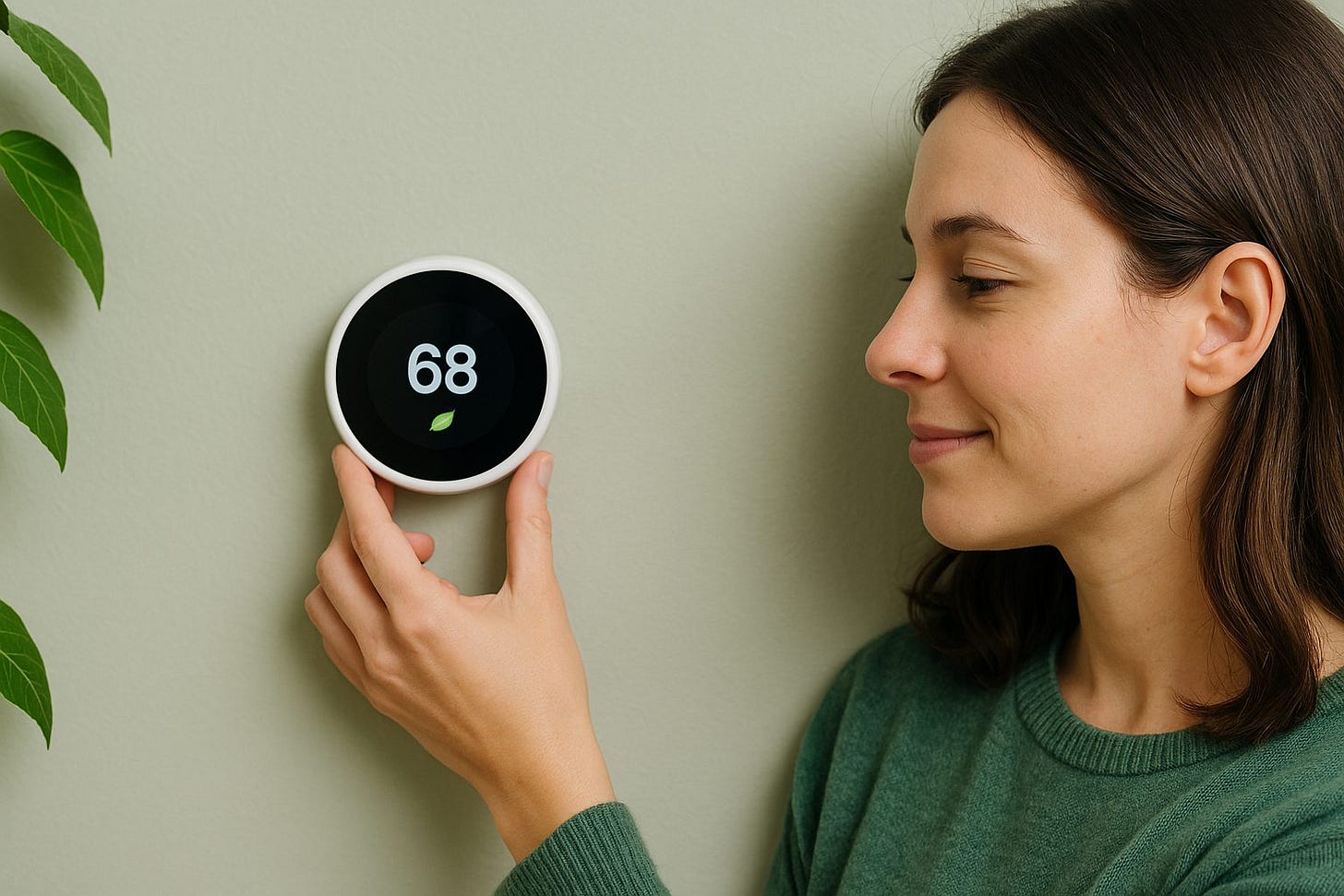6 Ways Smart Thermostats Make Your Home More Sustainable
Unlocking Home Efficiency — One Degree at a Time 🌱
Imagine your home as a finely tuned instrument: every dial, every pulse, every environment variable contributing to harmony. Now imagine one smart device — a thermostat — conducting that orchestra with precision you didn’t know was possible. Smart thermostats do exactly that: they don’t just “set the heat”—they optimise it.
In an era of climate urgency and rising energy bills, the idea that one small device can make your home significantly more sustainable sounds almost too good to be true. But the evidence is mounting. Below, I unpack 6 concrete ways smart thermostats make your home greener, leaner, and smarter. I’ve dug into recent studies, expert insights, and real-user feedback to bring you a lively, trustworthy guide. Ready? Let’s dive in.
1. Smarter Scheduling: Reducing Waste While You’re Away
One of the most obvious but powerful tools in a smart thermostat’s arsenal is automatic scheduling. Unlike old-school thermostats where you manually adjust settings, most smart ones learn your habits—or let you set routines—to dial back heating or cooling when you’re out, asleep, or otherwise not needing full climate control.
Thanks to geofencing, they can “know” when your phone leaves the house and shift to an energy-efficient mode—and then revive comfort just as you return. The result? Less heating or cooling wasted on empty rooms.
Project Drawdown, a leading climate initiative, estimates that smart thermostats deliver 10–15 % energy savings on home heating and cooling. That’s not fluff—it’s real impact.
2. Learning Algorithms: From Reactive to Proactive
These devices are no longer dumb timers. High-end smart thermostats use machine learning and adaptive algorithms to detect patterns in your behavior, outdoor weather, and seasonal shifts. Over time they fine-tune their own schedules—sometimes better than any homeowner ever could.
For example, the Nest Learning Thermostat watches your adjustments over time, senses occupancy, and gradually adjusts its schedule to match your routine. Some brands even offer AI enhancements to further optimize energy use in real time.
This is more than convenience. It helps reduce “human error” (e.g. forgetting to lower the temp before leaving) and passively saves energy.
3. Informed Insight: Data You Can Act On
One of my favorite features: dashboards. Smart thermostats give you energy consumption reports, heat maps, usage trends, and alerts when something is off (e.g. HVAC not running optimally).
With that data, you can answer questions like:
“Why did my energy usage spike that one day?”
“Which part of the home (or day) is most wasteful?”
“Should I upgrade insulation or seal leaks to amplify savings?”
These insights turn passive hardware into active partners in sustainability.
4. Longer Equipment Life & Preventive Maintenance
Here’s a sustainability win you might miss: less wear and tear. Because smart thermostats lower the runtime of your HVAC system and avoid rapid cycling, they help stretch the life of heating and cooling units.
They also often prompt maintenance alerts—filter replacement, service checks, or unusual system behavior—allowing you to address issues before they become full-blown failures.
Less waste, fewer replacements, lower environmental footprint over time.
5. Demand Response & Grid Harmony
This one is a bit more subtle, but powerful. Smart thermostats can participate in demand response or peak load reduction programs. During times when the grid is strained (e.g. hot summer afternoons with everyone cranking AC), utilities might ask users to pull back. Smart thermostats can respond automatically, shaving demand and helping stabilize the grid.
By doing so, they help reduce reliance on backup fossil-fuel plants, contributing to lower overall emissions. It’s like your home doing its part in a larger sustainability system.
6. Carbon Emissions Down, Comfort Up
At the heart of all this is the environmental payoff. As you use less energy, your home’s carbon footprint shrinks. CleanChoice Energy notes that every kilowatt-hour you save is one less kilowatt-hour generated (often from fossil sources).
Others estimate potential savings up to 15 % on heating and cooling when installed properly in a well-matched home system.
Better still: you don’t sacrifice comfort. Many smart thermostats maintain or even improve indoor comfort by preheating or cooling just in time, smoothing temperature swings, and adapting to seasonal changes.
A Note of Caution: Rebound Effects and Real-World Limits
Smart thermostats are powerful, but they’re not magic. Some recent research points to rebound effects—when people use more energy elsewhere because they perceive low cost from efficiency gains.
Also, in homes where a competent programmable thermostat was already in place, the incremental gains may be smaller. Consumer Reports notes savings of ~8 % in such cases.
Compatibility matters too: some HVAC systems, especially older ones or those without a “C-wire,” may not support all smart models seamlessly.
So yes, be mindful. Use smart features wisely. Monitor the data. The tool helps—you still play a key role.
Also read: 7 Simple Gadgets That Cut Your Electricity Bill in Half
Call to Action: Is It Time to Make the Switch?
If your home still runs on a conventional or basic programmable thermostat, stepping into the smart-thermostat world is one of the most tangible sustainability upgrades you can make. Start by checking your HVAC compatibility (C-wire? system type?). Next, pick a model that matches your home and control preferences.
Once installed, don’t just “set and forget.” Dive into the data. Adjust schedules. Experiment with eco modes. Engage with your own home’s behavior.


